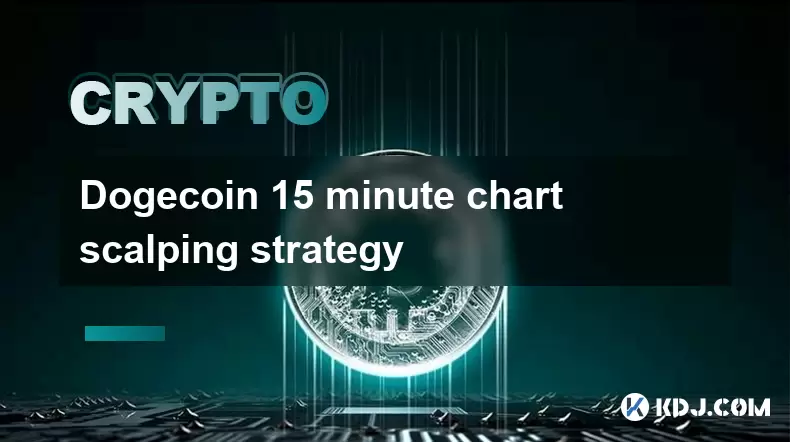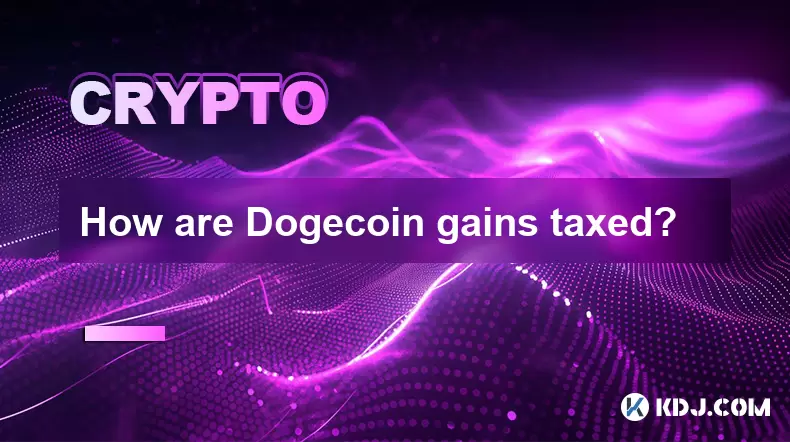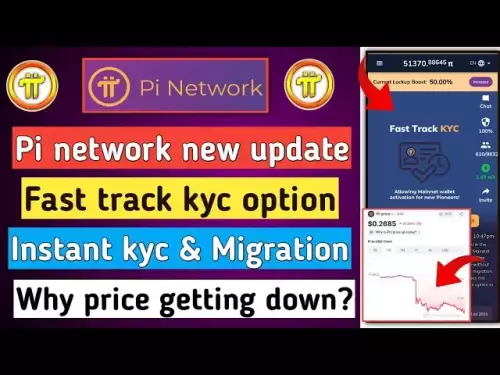-
 bitcoin
bitcoin $109667.069529 USD
-3.03% -
 ethereum
ethereum $3936.685804 USD
-4.07% -
 tether
tether $1.000493 USD
0.01% -
 xrp
xrp $2.771823 USD
-4.74% -
 bnb
bnb $957.805027 USD
-5.34% -
 solana
solana $196.735100 USD
-6.68% -
 usd-coin
usd-coin $0.999727 USD
-0.01% -
 dogecoin
dogecoin $0.227355 USD
-5.12% -
 tron
tron $0.335205 USD
-0.81% -
 cardano
cardano $0.779256 USD
-3.59% -
 ethena-usde
ethena-usde $0.999900 USD
-0.06% -
 hyperliquid
hyperliquid $42.492095 USD
-6.61% -
 chainlink
chainlink $20.501853 USD
-4.34% -
 avalanche
avalanche $28.952606 USD
-11.21% -
 stellar
stellar $0.356038 USD
-3.93%
Dogecoin 15 minute chart scalping strategy
Scalping Dogecoin using a 15-minute chart involves leveraging technical indicators like EMAs, RSI, and Bollinger Bands to capture quick profits from short-term price swings.
Jul 07, 2025 at 07:28 pm

Understanding Scalping in the Context of Dogecoin Trading
Scalping is a trading strategy that involves making numerous trades throughout the day to profit from small price movements. In the context of Dogecoin, this method is particularly relevant due to its high volatility and frequent price swings, which are often driven by social media trends and community sentiment. Traders who engage in scalping aim to capture gains within short timeframes—typically ranging from seconds to minutes.
The 15-minute chart offers an optimal balance between noise reduction and responsiveness for scalpers. It provides enough data points to identify meaningful patterns without overwhelming the trader with excessive information. When applied to Dogecoin (DOGE), this strategy can be highly effective if executed correctly using technical indicators and sound risk management principles.
Key Indicators Used in Dogecoin 15-Minute Chart Scalping
To successfully implement a scalping strategy on the Dogecoin 15-minute chart, traders typically rely on a combination of technical indicators to confirm entry and exit points. The most commonly used tools include:
- Moving Averages: Traders often use the 50-period Exponential Moving Average (EMA) and the 200-period EMA to determine trend direction. A bullish signal occurs when the shorter EMA crosses above the longer one, while a bearish signal is generated when it crosses below.
- Relative Strength Index (RSI): This momentum oscillator helps identify overbought or oversold conditions. An RSI above 70 suggests overbought territory, potentially signaling a reversal downward, whereas an RSI below 30 indicates oversold conditions, hinting at a possible upward bounce.
- Bollinger Bands: These bands help assess volatility and potential reversal points. Prices near the upper band may suggest overextension to the upside, while those near the lower band indicate similar conditions to the downside.
Combining these indicators increases the probability of successful trades by filtering out false signals and reinforcing trade decisions based on confluence.
Setting Up Your Chart for Effective Scalping
Before initiating any trades, setting up your charting platform correctly is crucial. Most traders use platforms like TradingView or Binance’s native interface for this purpose. Here's how to configure your Dogecoin 15-minute chart effectively:
- Select the 15-minute timeframe to ensure you're focusing on short-term fluctuations.
- Overlay the 50 EMA and 200 EMA on the price chart.
- Add the RSI indicator with default settings (14 periods).
- Apply Bollinger Bands with standard deviation set at 2 and period length of 20.
Once these elements are in place, monitor how price interacts with these indicators. For example, if the price touches the upper Bollinger Band and the RSI is above 70, this could signal a sell opportunity. Conversely, if the price hits the lower band and the RSI drops below 30, a buy setup might be forming.
Executing Scalp Trades Based on Confluence Signals
Successful scalp trading requires strict adherence to rules and a focus on confluence-based setups. Here’s a breakdown of how to execute a trade using the indicators mentioned earlier:
- Look for crossovers between the 50 EMA and 200 EMA to establish trend bias. If the 50 EMA is above the 200 EMA, lean toward long entries; if it’s below, consider shorting.
- Confirm the trend with RSI readings. Avoid entering long positions when RSI is already in overbought territory unless there’s strong volume support.
- Use Bollinger Bands as dynamic support/resistance levels. Entering a trade when the price bounces off these bands can yield quick profits if done in tandem with other confirming indicators.
Entry should occur once multiple indicators align. Stop-loss placement is typically just beyond the recent swing high or low, depending on the direction of the trade. Take-profit targets are usually set at 1–2% gains, given the nature of scalping.
Risk Management and Trade Psychology in Scalping DOGE
Scalping requires not only technical proficiency but also strong risk management skills and emotional discipline. Given the fast-paced nature of this strategy, even small mistakes can lead to significant losses. To mitigate risks:
- Always use a stop-loss order to limit downside exposure. Never risk more than 1–2% of your account equity per trade.
- Maintain a consistent risk-reward ratio. Even though scalp trades have small targets, aiming for a minimum of 1:1 or better ensures breakeven or slight profitability over time.
- Avoid overtrading. Only take setups that meet all criteria and avoid chasing missed opportunities.
- Keep a trade journal to analyze what works and what doesn’t. Reviewing past trades helps refine the strategy and improve decision-making.
Emotional control is vital. Fear and greed can cloud judgment, especially during volatile Dogecoin price swings. Sticking to predefined rules and maintaining a calm mindset significantly improves performance.
Frequently Asked Questions
Q: Can I apply the same scalping strategy to other cryptocurrencies?A: Yes, many of the principles used in Dogecoin scalping—such as moving averages, RSI, and Bollinger Bands—are applicable across various crypto assets. However, each coin has unique volatility characteristics, so adjustments may be necessary.
Q: What time zone should I use when scalping Dogecoin on the 15-minute chart?A: Time zones don't affect the chart itself since candlesticks form based on UTC timestamps. However, aligning your trading hours with major market sessions (e.g., Asian, European, or U.S.) can increase liquidity and volatility.
Q: Is scalping Dogecoin suitable for beginners?A: While the concept seems straightforward, scalping requires experience, discipline, and fast execution. Beginners are advised to practice extensively on demo accounts before committing real capital.
Q: How much capital do I need to start scalping Dogecoin effectively?A: There's no fixed amount, but having sufficient capital to absorb occasional losses while still achieving meaningful returns is important. A minimum of $100–$200 is recommended for micro-position sizing.
Disclaimer:info@kdj.com
The information provided is not trading advice. kdj.com does not assume any responsibility for any investments made based on the information provided in this article. Cryptocurrencies are highly volatile and it is highly recommended that you invest with caution after thorough research!
If you believe that the content used on this website infringes your copyright, please contact us immediately (info@kdj.com) and we will delete it promptly.
- AlphaTON's Bold Bet: Toncoin, Balance Sheets, and the Future of Digital Treasuries
- 2025-09-27 04:45:15
- Crypto Kidnapping in Minnesota: A New York Minute Breakdown of the $8 Million Heist
- 2025-09-27 04:25:14
- Avalanche, RUVI, and the Altcoin Rush: What's Fueling the Fire?
- 2025-09-27 04:25:14
- Optimism's Breakdown: Navigating Support Zones for the Next Move
- 2025-09-27 04:45:15
- Linea Price Surges as SWIFT Pilots Blockchain Messaging: A New Era for Global Payments?
- 2025-09-27 04:50:01
- Dogecoin Price Prediction & Crypto Buy: Navigating the Meme Coin Maze
- 2025-09-27 04:50:01
Related knowledge

Bitcoincoin burning mechanism
Jul 20,2025 at 09:21pm
What is the Dogecoin burning mechanism?The Dogecoin burning mechanism refers to the process of permanently removing DOGE tokens from circulation by se...

How to earn free Bitcoincoin?
Jul 19,2025 at 10:08pm
What is Dogecoin and Why Earn It?Dogecoin (DOGE) started as a meme-based cryptocurrency in 2013 but has grown into a widely recognized digital asset. ...

Is Coinbase a good wallet for Bitcoincoin?
Jul 19,2025 at 04:42pm
Understanding Coinbase as a Wallet Option for DogecoinWhen considering where to store Dogecoin, Coinbase is often mentioned as a potential option due ...

How to buy Bitcoincoin with PayPal?
Jul 23,2025 at 06:57am
Understanding the Basics of Buying DogecoinBefore diving into the process of buying Dogecoin with PayPal, it’s essential to understand what Dogecoin i...

Best app to buy Dogecoin
Jul 23,2025 at 03:08pm
What Is a Cryptocurrency Exchange and How Does It Work?A cryptocurrency exchange is a digital marketplace where users can buy, sell, or trade cryptocu...

How are Dogecoin gains taxed?
Jul 25,2025 at 07:01am
Understanding the Taxation of Dogecoin GainsWhen it comes to Dogecoin (DOGE), many investors are drawn to its meme-inspired branding and volatile pric...

Bitcoincoin burning mechanism
Jul 20,2025 at 09:21pm
What is the Dogecoin burning mechanism?The Dogecoin burning mechanism refers to the process of permanently removing DOGE tokens from circulation by se...

How to earn free Bitcoincoin?
Jul 19,2025 at 10:08pm
What is Dogecoin and Why Earn It?Dogecoin (DOGE) started as a meme-based cryptocurrency in 2013 but has grown into a widely recognized digital asset. ...

Is Coinbase a good wallet for Bitcoincoin?
Jul 19,2025 at 04:42pm
Understanding Coinbase as a Wallet Option for DogecoinWhen considering where to store Dogecoin, Coinbase is often mentioned as a potential option due ...

How to buy Bitcoincoin with PayPal?
Jul 23,2025 at 06:57am
Understanding the Basics of Buying DogecoinBefore diving into the process of buying Dogecoin with PayPal, it’s essential to understand what Dogecoin i...

Best app to buy Dogecoin
Jul 23,2025 at 03:08pm
What Is a Cryptocurrency Exchange and How Does It Work?A cryptocurrency exchange is a digital marketplace where users can buy, sell, or trade cryptocu...

How are Dogecoin gains taxed?
Jul 25,2025 at 07:01am
Understanding the Taxation of Dogecoin GainsWhen it comes to Dogecoin (DOGE), many investors are drawn to its meme-inspired branding and volatile pric...
See all articles










































































